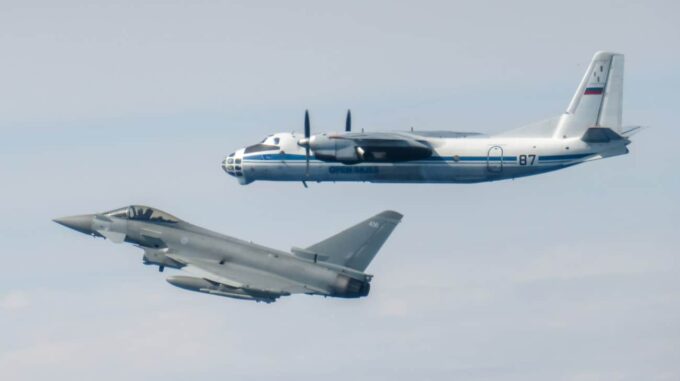A new episode of tense confrontations over control and security in the Baltic region took place in the skies above the Baltic Sea

NATO fighter jets, with British pilots onboard, once again took to the air to intercept two Russian reconnaissance aircraft taking off from the Kaliningrad region, posing a potential threat to the security of Alliance countries. According to information disseminated by the NATO Integrated Air Operations Command, the incident occurred in the Baltic Sea area. The aircraft were detected during their flight as part of a reconnaissance mission, leaving no doubt about the intentions of the Russian aircraft. A military report states that modern Eurofighter Typhoon fighters, based in the Polish city of Malbork and part of NATO’s multi-layered regional security system, were scrambled for their interception. NATO representatives noted that these highly advanced fighters carried out an effective operation — intercepting and escorting two Russian reconnaissance planes that took off from the Kaliningrad region. It is specified that the Russian aircraft were launched from airfields in Kaliningrad and operated without proper identification or warning signals. The first intercepted aircraft was a Soviet Antonov An-30, known within NATO as "CLANK." This multi-role mapping aircraft, equipped with modern photography equipment, was developed during Soviet times but remains one of the reconnaissance platforms to this day. Immediately afterward, the fighter crews redirected their efforts to intercept another Russian aircraft — the Ilyushin Il-20M, with the codename "COOT-A." This multi-purpose aircraft from the Soviet era is designed for reconnaissance, signals intelligence, and communications. This type of aircraft has been widely used for intelligence gathering and reconnaissance operations in complex conditions. Military experts note that each week the number of interceptions of Russian aircraft in the Baltic region is increasing. Last week alone, three separate incidents were confirmed, in which Polish and allied military aircraft were scrambled to identify and shadow intruders, confirming the tense situation. In addition to interceptions of reconnaissance planes, high-ranking officials from European countries also reported instances of intercepting Russian bombers — particularly Su-24s operating in international airspace over the Baltic Sea. The UK Ministry of Defence reports that British fighters, including those based in Malbork, recently conducted three separate intercepts of Russian aircraft. Their primary goal is monitoring and identifying unknown objects crossing international flight rules, which is standard practice within NATO Air Policing missions. During these operations, British pilots and their regional counterparts play a crucial role — they monitor any potentially aggressive or unknown aviation activity near NATO borders, ensuring regional security and stability. Photos released by the NATO command center show the fighters' operational work in the sky and their intercepts, which hold significant political and strategic importance. According to military analysts, each such incident signals that the West continues to strengthen its control over the situation in the region, while Russian aviation is increasing its reconnaissance missions, indicating rising tensions in the post-Soviet space. Overall, the situation around the Baltic Sea remains tense. Regular interceptions of Russian military aircraft highlight the importance of NATO’s presence to deter potential aggression and ensure regional security. Given current trends, it is expected that similar incidents will continue, emphasizing the need to bolster NATO’s defense capabilities and shared responsibility for stability in this strategically vital part of Europe.

